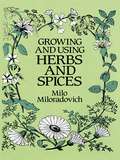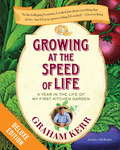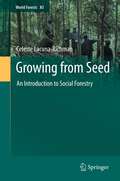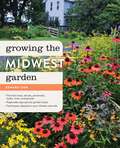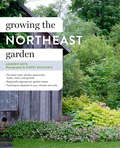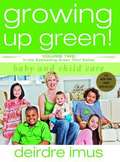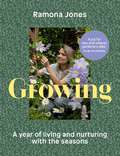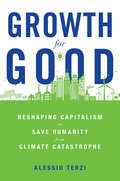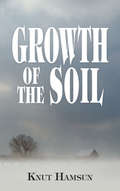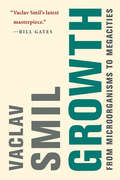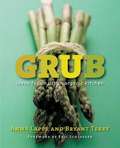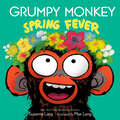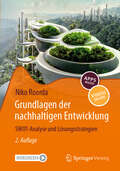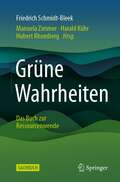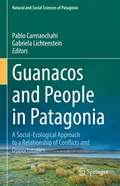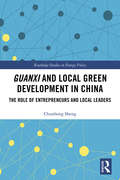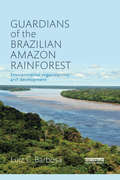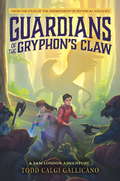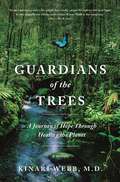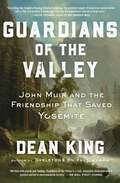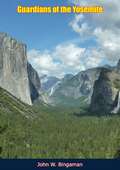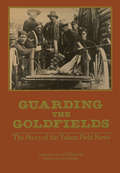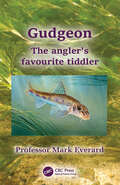- Table View
- List View
Growing and Using Herbs and Spices
by Milo Miloradovich"Will delight both the gardener and the cook." -- Library Journal."A wonderful compendium -- for anyone who wants to cultivate them or cook with them as so written as to definitely stimulate the interest of the passing page flipper." -- Kirkus Review.Over the years -- as tastes have changed and fads have come and gone -- the gentle art of the herbalist has remained a constant, year-round source of joy for an incredible array of connoisseurs -- from professional horticulturists and accomplished gourmets to enthusiastic suburban gardeners and city-dwelling naturalists.This versatile, handy reference provides these thousands of amateur and professional herbalists with the most compact and complete handbook on culinary herbs and spices possible. Here in a thoroughly delightful labor of love are detailed instructions on how to plant, transplant, cultivate, harvest, use and preserve virtually every herb and spice available in North America today. Ms. Miloradovich takes us step by step through the various stages of herbal development, from preparing seedlings for early transplanting to drying, cutting, and quick-freezing fragrant herbs for potpourri, medicinal lotions, pomanders, and even moth preventives.Hundreds of herbs and spices are included, each introduced with a fascinating anecdote detailing its historical background and legends. Discover the power of cinnamon, one of the oldest spices known to humanity -- used as a love potion by the Romans and a religious incense by the Hebrews and Ancient Egyptians. Find out why Italians still use basil as a token of love and Hindus still consider it a sacred symbol of reverence for the dead. Ms. Miloradovich has found an intriguing tale for each of the hundreds of herbs and spices she discusses -- from bitter unblanched celery to delicious roots of love parsley.Whether you'd like to grow perennials, biennials, or annuals in your apartment window box, or you need a convenient guide for preserving rare herbs, or you just want to know more about the romantic histories, mysterious powers, and legends behind your favorite spices and fragrances, you'll find this engaging book a stimulating source, sure to lead to more and more adventures growing and enjoying herbs and spices.
Growing at the Speed of Life Deluxe: A Year in the Life of My First Kitchen Garden
by Graham KerrWith more than two dozen cookbooks and hundreds of television shows, lectures, and personal appearances devoted to promoting healthful cooking, award-winning chef and former "Galloping Gourmet" Graham Kerr literally starts from the ground up in this engaging, inspiring, and highly informative introduction to the joys of the kitchen garden-and the pleasures of the table that start with growing your own food. While Kerr taps into the current trend of sustainability, eating locally and organically, and eschewing fast food, he recognizes that today's home cooks are savvier and more discerning than their predecessors in the back-to-the-land movement. And in this day of rampant obesity and related diseases, he understands how critical taking these vital steps toward wellness can be.<P> Growing at the Speed of Life takes you through the first year in his kitchen garden, sharing the lessons learned and the wisdom received from his circle of local knowledge providers. From digging up his "south lawn" and putting together a greenhouse to planting his first seeds and harvesting and sharing his first crop with others in need, Kerr provides a whirlwind tour through his gardening adventures. Along the way, he profiles sixty common-and not-so-common but readily available-garden vegetables, fruits, and herbs with useful advice and recommendations for care and feeding.<P> Once the harvest is done, Kerr takes you into the kitchen, offering guidance on the best cooking methods to create appealing dishes in his inimitable and spirited style. He includes more than one hundred recipes that are as simple and elegant as they are healthful-and that will certainly entice you to increase the amount of plant foods in your diet.
Growing from Seed
by Celeste Lacuna-RichmanSocial Forestry and its most well-known variant, Community Forestry, have been practiced almost as long as people have used forests. During this time, forests have provided people with countless goods and services, including wood, medicine, food, clean water and recreation. In making use of forest resources, people throughout history have frequently organized themselves and established both formal and informal rules. However, just as the discipline of Forestry had previously limited and concentrated the function of forests to the timber it provides, the popular understanding of Social Forestry has restricted it to a Forestry sub-topic that deals with welfare, without any connection to income-generation, and is practiced only in developing countries. This volume introduces the concepts of Social Forestry to the student, gives examples of its practice around the world and attempts to anticipate developments in its future. It aims to widen the concept of Social Forestry from a sub-practice within Forestry to a practice that will make Forestry relevant in countries where wood production alone is no longer the main reason for keeping land forested, thereby rediscovering and redefining this important topic.
Growing the Midwest Garden: Regional Ornamental Gardening (Regional Ornamental Gardening Series)
by Edward LyonPart of the Timber Press Regional Ornamental Gardening book series, this book is ideal for home gardeners in Illinois, Indiana, Iowa, Kansas, Michigan, Minnesota, Missouri, Nebraska, North Dakota, Ohio, South Dakota, Wisconsin, southern Ontario, southern Manitoba, and southeastern Saskatchewan.
Growing the Northeast Garden: Regional Ornamental Gardening (Regional Ornamental Gardening Series)
by Andrew Keys Kerry MichaelsPlant selection and garden style are deeply influenced by where we are gardening. To successfully grow a range of beautiful ornamental plants, every gardener has to know the specifics of the region’s climate, soil, and geography. Gardeners in the northeast are lucky—the regular summer rain, gorgeous summer blooms, and stunning fall color make it an ideal place to garden. But there are drawbacks, like hot and humid summers, bitterly cold winters, and mosquitos. TThe practical and beautiful Growing the Northeast Garden starts with a comprehensive overview of the weather and geography of the area, along with regionally specific advice on zones, microclimates, soil, pests, and maintenance. Profiles of the best trees, shrubs, perennials, annuals, and bulbs offer hundreds of plant suggestions, along with complete information on growth and care.
Growing the Southwest Garden: Regional Ornamental Gardening (Regional Ornamental Gardening Series)
by Judith PhillipsPlant selection and garden style are deeply influenced by where we are gardening. To successfully grow a range of beautiful ornamental plants, every gardener has to know the specifics of the region’s climate, soil, and geography.Growing the Southwest Garden, by New Mexico-based garden designer Judith Phillips, is a practical and beautiful handbook for ornamental gardening in a region known for its low rainfall and high temperatures. With more than thirty years of experience gardening in the Southwest, Phillips has created an essential guide, featuring regionally specific advice on zones, microclimates, soil, pests, and maintenance. Profiles of the best plants for the region include complete information on growth and care.
Growing up Green! Baby and Child Care
by Deirdre ImusThe essential, parent-friendly guide to raising a healthy child in our increasingly toxic environment. The second volume in the New York Times bestselling Green This! series, Growing Up Green: Baby and Child Care is a complete guide to raising healthy kids. Environmental activist and children's advocate Deirdre Imus addresses specific issues faced by children in every age group -- from infants to adolescents and beyond. With a focus on preventing rather than treating childhood illnesses, Imus concentrates on educating and empowering parents with information such as: How to make sure your child is vaccinated safely. Which plastic bottles and toys are least toxic. How to lobby for safer school environments and support children's environmental health studies. Advice from leading "green" pediatricians and nationally recognized doctors such as Mehmet C. Oz, M.D. Chock-full of research and advice, Growing Up Green makes it easy for you to introduce your child to the "living green" way of life.
Growing: A year of gardening wisdom with simple monthly projects
by Ramona JonesEscape into Ramona's garden, find peace within these pages.A love letter, and gentle guide, to the power of nurturing – flora, fauna and yourself – in whatever outdoor space you have, be it a plot, patch or pot.Each season brings self-care lessons, glimmers of joy and growing opportunities. Spring is a time of reawakening, summer is a time of generosity, autumn brings transformation and winter invites us to slow down.With simple projects and garden jobs organised by month, this is a practical guide for new and established gardeners alike, framed by Ramona's diary-style reflections.-“Over the years, I’ve found solace in gardening, which has allowed me to discover who I truly am. If my mental health feels turbulent, the seasonal rhythm in the garden is a predictable and reassuring constant. Through this book I hope to help you nurture your personal journey through the act of gardening. If you have never gardened before and are feeling intimidated at the thought of getting started, this book will give you permission to begin.” Ramona Jones
Growth for Good: Reshaping Capitalism to Save Humanity from Climate Catastrophe
by Alessio TerziFrom the front lines of economics and policymaking, a compelling case that economic growth is a force for good and a blueprint for enrolling it in the fight against climate change. Economic growth is wrecking the planet. It’s the engine driving climate change, pollution, and the shrinking of natural spaces. To save the environment, will we have to shrink the economy? Might this even lead to a better society, especially in rich nations, helping us break free from a pointless obsession with material wealth that only benefits the few? Alessio Terzi takes these legitimate questions as a starting point for a riveting journey into the socioeconomic, evolutionary, and cultural origins of our need for growth. It’s an imperative, he argues, that we abandon at our own risk. Terzi ranges across centuries and diverse civilizations to show that focus on economic expansion is deeply interwoven with the human quest for happiness, well-being, and self-determination. Growth, he argues, is underpinned by core principles and dynamics behind the West’s rise to affluence. These include the positivism of the Enlightenment, the acceleration of science and technology and, ultimately, progress itself. Today growth contributes to the stability of liberal democracy, the peaceful conduct of international relations, and the very way our society is organized through capitalism. Abandoning growth would not only prove impractical, but would also sow chaos, exacerbating conflict within and among societies. This does not mean we have to choose between chaos and environmental destruction. Growth for Good presents a credible agenda to enroll capitalism in the fight against climate catastrophe. With the right policies and the help of engaged citizens, pioneering nations can set in motion a global decarbonization wave and in parallel create good jobs and a better, greener, healthier world.
Growth of the Soil (Twelve-point Series)
by Knut Hamsun W. W. WorsterA grand, sweeping saga of sacrifice and struggle, this epic tale recaptures the world of Norwegian homesteaders at the turn of the twentieth century. Isak and Inger, an idealistic young couple, reject modern society to raise their family on a back country farm. Isak's embrace of outdoor life reflects author Knut Hamsun's attitude of rugged individualism and his back-to-nature philosophy. Rich in symbolism, this moving tale of peasant life and the search for spiritual fulfillment in nature continues to resonate with modern readers. First published in Norwegian in 1917, Growth of the Soil created an international sensation and led to the author's 1920 Nobel Prize in Literature.
Growth: From Microorganisms to Megacities (The\mit Press Ser.)
by Vaclav SmilA systematic investigation of growth in nature and society, from tiny organisms to the trajectories of empires and civilizations.Growth has been both an unspoken and an explicit aim of our individual and collective striving. It governs the lives of microorganisms and galaxies; it shapes the capabilities of our extraordinarily large brains and the fortunes of our economies. Growth is manifested in annual increments of continental crust, a rising gross domestic product, a child's growth chart, the spread of cancerous cells. In this magisterial book, Vaclav Smil offers systematic investigation of growth in nature and society, from tiny organisms to the trajectories of empires and civilizations. Smil takes readers from bacterial invasions through animal metabolisms to megacities and the global economy. He begins with organisms whose mature sizes range from microscopic to enormous, looking at disease-causing microbes, the cultivation of staple crops, and human growth from infancy to adulthood. He examines the growth of energy conversions and man-made objects that enable economic activities—developments that have been essential to civilization. Finally, he looks at growth in complex systems, beginning with the growth of human populations and proceeding to the growth of cities. He considers the challenges of tracing the growth of empires and civilizations, explaining that we can chart the growth of organisms across individual and evolutionary time, but that the progress of societies and economies, not so linear, encompasses both decline and renewal. The trajectory of modern civilization, driven by competing imperatives of material growth and biospheric limits, Smil tells us, remains uncertain.
Grub: Ideas for an Urban Organic Kitchen
by Anna Lappe Bryant TerryIn the past few years, organic food has moved out of the patchouli-scented aisles of hippie food co-ops and into three-quarters of conventional grocery stores. Concurrent with this growth has been increased consumer awareness of the social and health-related issues around organic eating, independent farming, and food production. Combining a straight-to-the-point exposé about organic foods (organic doesn't mean fresh, natural, or independently produced) and the how-to's of creating an affordable, easy-touse organic kitchen, Grub brings organics home to urban dwellers. It gives the reader compelling arguments for buying organic food, revealing the pesticide industry's influence on government regulation and the extent of its pollution in our waterways and bodies. With an inviting recipe section, Grub also offers the millions of people who buy organics fresh ideas and easy ways to cook with them. Grub's recipes, twenty-four meals oriented around the seasons, appeal to eighteen- to forty-year-olds who are looking for fun and simple meals. In addition, the book features resource lists (including music playlists to cook by), unusual and illuminating graphics, and every variety of do-it yourself tip sheets, charts, and checklists.
Grumpy Monkey Spring Fever (Grumpy Monkey)
by Suzanne LangEveryone’s favorite grump, Jim Panzee, star of the bestselling Grumpy Monkey series, has caught a bad case of spring fever and wakes up feeling very silly in this delightful new picture book. <p><p> When Jim runs through the jungle laughing and shouting with glee, the other animals are very concerned. This just isn’t the grumpy Jim they know. Soon Norman diagnoses Jim with a bad case of spring fever and tells Jim that he needs to find a cure. The other jungle animals offer suggestions: Take a calming breath! Sniff lavender! Take a nap! Try a time-out! Jim tries everything to get his grump back, but when nothing works, it becomes contagious and the other animals catch spring fever too. Soon the jungle erupts into a silly celebration of springtime as they all join in the fun. <p><p> From the bestselling team Suzanne and Max Lang comes another fun filled adventure starring the beloved chaacter Jim Panzee. Lively illustrations offering a belly laugh on every spread will delight the many Grumpy Monkey fans. <p> <b>New York Times Bestseller</b>
Grundlagen der nachhaltigen Entwicklung: SWOT-Analyse und Lösungsstrategien
by Niko RoordaDieses Buch bietet eine umfassende Einführung der nachhaltigen Entwicklung auf der Grundlage eines Gleichgewichts zwischen People - Planet - Profit. Eine Vielzahl von Themen wird behandelt, nicht als getrennte Themen, sondern immer in ihrer Kohärenz. Das Buch bietet eine Kombination aus Theorie und Praxis, die es Studierenden aller Disziplinen ermöglicht, Nachhaltigkeit zu verankern und anzuwenden. The translation was done with the help of artificial intelligence. A subsequent human revision was done primarily in terms of content.
Grüne Wahrheiten: Das Buch zur Ressourcenwende
by Friedrich Schmidt-BleekEs ist das brandaktuelle Buch für die zentrale, globale Herausforderung unserer Zeit. In seinem Vermächtnis, zeigt sich Friedrich Schmidt-Bleek erneut als richtunggebender Vordenker, als Visionär, Umweltforscher und Gestalter einer zukunftsfähigen Umweltpolitik. Ein erfolgreiches Ökologiekonzept muss alle die Klimakrise auslösenden und Umwelt zerstörenden Bereiche in ihren ineinandergreifenden Wirkungszusammenhängen ganzheitlich betrachten. Darauf kann eine verantwortungsbewusste Politik mit klaren Zielen, mit richtungssicheren sozialen, ökologischen und wirtschaftlichen Indikatoren aufbauen. Der zentrale Hebel zur Bewältigung der Klimakrise und Beendigung der Umweltzerstörung besteht für den Autor in der qualitativen Veränderung der Ressourcenabhängigkeit von Produkten und Dienstleistungen durch eine wesentliche Minimierung des Ressourcenverbrauchs. Mit dem seit 1990 entwickelten MIPS Konzept (Material-Input pro Serviceeinheit) ist ein Parameter entstanden, der den Ressourcenverbrauch im Lebenszyklus von Produkten und Dienstleistungen berechenbar und damit veränderbar macht. Damit ist der Weg zu zukunftsfähigen, nachhaltigen Produkten gangbar geworden. Anschaulich und allgemeinverständlich geschrieben legt Schmidt-Bleek hier sein über Jahrzehnte verfeinertes, und vorsorgendes Ökologiekonzept dar, dass eine gesamtgesellschaftliche Transformation und Ressourcenwende ermöglicht und uns allen Wege aufzeigt, aktiv daran teilzuhaben zu können.
Guanacos and People in Patagonia: A Social-Ecological Approach to a Relationship of Conflicts and Opportunities (Natural and Social Sciences of Patagonia)
by Gabriela Lichtenstein Pablo CarmanchahiThis book relates one of the most representative species of Patagonian wildlife, the guanaco, to human societies across time, and explores how that relationship has changed over time due to different land uses and productive interests. The book provides information to understand these interactions, and contextualizes the current situation of this species. In some cases, it proposes possible solutions to conflicts, and also shows ongoing activities aimed at sustainable use and conservation. The audience for this book includes researchers, graduate students, policy makers and conservation and rural development professionals. In addition, it will serve as a tool for application authorities and field technicians on the use and conservation of wildlife, to define management actions for this species.
Guano and the Opening of the Pacific World
by Gregory T. CushmanFor centuries, bird guano has played a pivotal role in the agricultural and economic development of Latin America, East Asia, and Oceania. As their populations ballooned during the Industrial Revolution, North American and European powers came to depend on this unique resource as well, helping them meet their ever-increasing farming needs. This book explores how the production and commodification of guano has shaped the modern Pacific Basin and the world's relationship to the region. Marrying traditional methods of historical analysis with a broad interdisciplinary approach, Gregory T. Cushman casts this once little-known commodity as an engine of Western industrialization, offering new insight into uniquely modern developments such as environmental consciousness and conservation movements; the ascendance of science, technology, and expertise; international relations; and world war.
Guanxi and Local Green Development in China: The Role of Entrepreneurs and Local Leaders (Routledge Studies in Environmental Policy)
by Chunhong ShengThis book examines the factors which contribute to local green development in China and employs political ecology to analyze the relationship between power and the environment. Specifically, it looks at which actors control access to resources and are therefore able to promote environmental progress. Following the reform and opening-up of China in the 1970s, entrepreneurs and local officials profited economically and politically and formed close relationships, known as guanxi in China. As a result, they have also been criticized as those responsible for the associated ecological damage. This book does not contest this association, but instead argues that the current literature places too much emphasis on their negative influence and the positive influence of their environmental work has been neglected. Building on three case studies where local green development is being pursued, Shanghai Pudong New Area, Baoding, and Wuning, this book shows how local officials and entrepreneurs can also be the crusaders of a greener environment at the local level in China. This book will be of great interest to students and scholars of Chinese studies, with a particular interest in environmental policy and politics, business and society, as well as those interested in sustainable development more broadly.
Guardians of the Brazilian Amazon Rainforest: Environmental Organizations And Development
by Luiz C. BarbosaThe Amazon region is the focus of intense conflict between conservationists concerned with deforestation and advocates of agro-industrial development. This book focuses on the contributions of environmental organizations to the preservation of Brazilian Amazonia. It reveals how environmental organizations such as Greenpeace, Friends of the Earth, WWF and others have fought fiercely to stop deforestation in the region. It documents how the history of frontier expansion and environmental struggle in the region is linked to Brazil’s position in an evolving capitalist world-economy. It is shown how Brazil’s effort to become a developed country has led successive Brazilian governments to devise development projects for Amazonia. The author analyses how globalization has led to the expansion of international commodity chains in the region, particularly for mineral ores, soybeans and beef. He shows how environmental organizations have politicized these commodity chains as weapons of conservation, through boycotting certain products, while other pro-development groups within Brazil claim that such organizations threaten Brazil's sovereignty over its own resources.
Guardians of the Gryphon's Claw
by Todd Calgi GallicanoA new action adventure series set in our famous national parks! Enter the world of the Department of Mythical Wildlife, where our protagonist, Sam London, is tasked with protecting legendary animals that secretly live amongst our treasured wildlife. Haunted by a dream of a mythical gryphon, Sam London uncovers an ancient secret that will change the way he sees the world forever. Recruited by Dr. Vance Vantana, an eccentric zoologist and park ranger sent by the government, Sam is whisked away on an adventure that takes him to the farthest reaches of the globe. Along this journey, Sam learns an incredible truth: mythical creatures are real and living among us in our national parks. A special department in the U.S. government ensures that their existence remains hidden. But Sam’s dream is an omen that the secret may now be in danger. Someone seeks the power to expose these creatures and overthrow humankind—and that power can only be found in a magical talisman known as the gryphon’s claw. "A fun-filled start to a series that is sure to keep lovers of Rick Riordan running to the shelves."-SLJ"A death-defying, globe-spanning adventure, packed with creatures out of folklore and myth....[Guardians of the Gryphon's Claw is] a solid series opener and debut for Gallicano, who stocks his story with engaging characters, human, and otherwise."-Publishers Weekly
Guardians of the Trees: A Journey of Hope Through Healing the Planet: A Memoir
by Kinari WebbA "magnificent, empowering" (Bill McKibben) memoir about a woman spearheading a global initiative to heal the world’s rainforests and the communities who depend on them. <p><p>When Kinari Webb first traveled to Indonesian Borneo at 21 to study orangutans, she was both awestruck by the beauty of her surroundings and heartbroken by the rainforest destruction she witnessed. As she got to know the local communities, she realized that their need to pay for expensive healthcare led directly to the rampant logging, which in turn imperiled their health and safety even further. Webb realized her true calling was at the intersection of medicine and conservation. <p><p>After graduating with honors from the Yale School of Medicine, Webb returned to Borneo, listening to local communities about their solutions for how to both protect the rainforests and improve their lives. Founding two non-profits, Health in Harmony in the U.S. and ASRI in Indonesia, Webb and her local and international teams partnered with rainforest communities, building a clinic, developing regenerative economies, providing educational opportunities, and dramatically transforming the region. But just when everything was going right, Webb was stung by a deadly box jellyfish and would spend the next four years fighting for her life, a fight that would lead her to rethink everything. Was she ready to expand her work to a global scale and take climate change head on? <p><p>Full of hope and optimism, Webb takes us on an exhilarating, galvanizing journey across the world, sharing her passion for the natural world and for humanity. In our current moment of crisis, Guardians of the Trees is an essential roadmap for moving forward and the inspiring story of one woman’s quest to heal the world.
Guardians of the Valley: John Muir and the Friendship that Saved Yosemite
by Dean KingThe dramatic and uplifting story of legendary outdoorsman and conservationist John Muir&’s journey to become the man who saved Yosemite—from the author of the bestselling Skeletons on the Zahara: A True Story of Survival.In June of 1889 in San Francisco, John Muir—iconic environmentalist, writer, and philosopher—meets face-to-face for the first time with his longtime editor Robert Underwood Johnson, an elegant and influential figure at The Century magazine. Before long, the pair, opposites in many ways, decide to venture to Yosemite Valley, the magnificent site where twenty years earlier, Muir experienced a personal and spiritual awakening that would set the course of the rest of his life. Upon their arrival the men are confronted with a shocking vision, as predatory mining, tourism, and logging industries have plundered and defaced &“the grandest of all the special temples of Nature.&” While Muir is consumed by grief, Johnson, a champion of society&’s most pressing debates via the pages of the nation&’s most prestigious magazine, decides that he and Muir must fight back. The pact they form marks a watershed moment, leading to the creation of Yosemite National Park, and launching an environmental battle that captivates the nation and ushers in the beginning of the American environmental movement. Beautifully rendered, deeply researched, and inspiring, Guardians of the Valley is a moving story of friendship, the written word, and the transformative power of nature. It is also a timely and powerful &“origin story&” as the toweringly complex environmental challenges we face today become increasingly urgent.
Guardians of the Yosemite: A Story of the First Rangers
by John W. BingamanIn Guardians of the Yosemite: A Story of the First Rangers, which was first published in 1961, John W. Bingaman provides the reader with a fascinating account of the early days of park rangers, who took charge just as the U.S. Army withdrew from Yosemite. As Dr. Carl Parcher Russell puts it so succinctly, “the precedents and practices established by [the park ranger] were all-important in shaping the protection principles which characterize the present-day Ranger Department.”In the author’s own words, “the purpose in writing this book is to leave permanent records of the First Rangers who contributed so much during their long years of service, and to bridge the gap from the military to the civilian protection and administration of Yosemite National Park.“During the years of my service in Yosemite, from 1918 to 1956, I found there was very little information on the lives and activities of the First Rangers. Some of these men were still in service when I became a Ranger. However, many had died and their records were few and scattered.“In the old days, one would hear the remark, ‘It is a privilege to work for the Park Service.’ It was a privilege for me to serve thirty-eight years in the Yosemite Ranger Service, to be associated with the many fine Park people and the guardians and administrators of the National Park Service whose principal purpose was to serve loyally the cause of the parks.”
Guarding the Goldfields: The Story of the Yukon Field Force
by Brereton GreenhousCanada’s gold rush of the late 1890s attracted dreamers and schemers from all over North America. Guarding the Goldfields is the story of the men sent to guard the Yukon and maintain order.
Gudgeon: The angler's favourite tiddler
by Mark EverardThis book is a celebration of the humble gudgeon, the angler's favourite 'tiddler'. This much-loved little fish is long overdue a little book all of its own. Scientist, author and broadcaster Dr Mark Everard tells tales about the biology of the gudgeon, gudgeon fishing, and the diverse social quirks and values of this most popular of little fishes.
